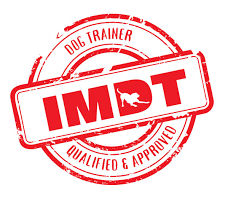Maybe you had a perfect puppy who used to follow you everywhere and suddenly somewhere between 4 and 15 months he decided that there are more interesting things than running back to you. Maybe you have a rescue dog but you don’t trust her off the leash. Perhaps you have a Beagle or a Husky and you have been told that these dogs can’t be reliably trained to come back.
Whatever your situation, having a reliable recall is probably the number one life skill every dog should have, even if they are never off-lead. Any dog can suddenly find themselves at large and in a dangerous situation, perhaps they slipped their collar or squeezed through a gate and are heading for a busy road. Maybe they are mooching around the garden when you suddenly realise they found a dangerous or poisonous object. Maybe they just run off with an expensive shoe in their mouth. Maybe you need to be able to get them back from the other end of the long lead during a walk, instead of wrestling them back.
HOW TO TRAIN AMAZING RECALL?
Find out what motivates your dog. Write a list of 10 things, from the least exciting reward that you dog will work for, to the very thing your dog would sell their should for. This number one reward is what you will use in your recall training, and you will only use it in recall training.
Choose your recall cue. This can be your dogs name + “come” or “pup-pup-pup” or a whistle signal, or any other sound that you can reproduce loudly enough to penetrate through background noise. The advantage of the whistle signal is that it sounds the same no matter who is blowing it, how good their voice is on that day and no matter what mood they are in. Your the dog will be less likely to race back to you if you sound frustrated or annoyed about how they just rolled in rotten fish or jumped up on a person in white trousers.
Pair the new recall cue with the magic treat or play (or both!). Be generous. Don”t wait for your dog to come, just give the cue and immediately offer the magic experience, so that the two things become firmly linked in your dog”s mind. The excitement for that reward will translate to the enthusiasm and speed with which your dog runs back to you.
Take your time. Train in boring places with no distractions at first, with your dog just a meter away. Slowly start adding distance and distractions. Be creative. Be fun. Be methodical. But don’t rush this process and don’t test your recall in real world environment until you are absolutely sure that he will come back. If you take that risk and your dog is not ready, he may hesitate or choose not to come and your training is set back.
Make recall training fun. Keep the sessions short. Be unpredictable, don’t let your dog figure out that he is about to hear his recall cue. Play recall games such as hide and seek with a circle of people calling and rewarding. Throw a piece of boring dry food or a treat away from you for the dog to chase. As he gets to that treat, give your recall cue and race away from your dog so he has to run full pelt to get back to you. When he does, reward generously with the Disneyland value treat or even a whole handful.
- MAKE RECALL training fun.
- BE GENEROUS give the cue and immediately offer the magic experience.
- FIND OUT what motivates your dog.
HOW LONG WILL IT TAKE?
Training an amazing, reliable and turn-on-the-penny and fly like the wind back to the owner kind of recall, takes a long time, a lot of patience and a sense that you know what you are doing. If you have any doubts or need more guidance to guarantee that you will be successful, get professional help.
- TURN-ON-THE-PENNY and fly like the wind back to the owner.
- THREE WEEKS of building foundations.
- THREE WEEKS of proofing.
THE SECRET TO SUCCESS
The best piece of advice for rocket-speed reliable recall is to build an amazing relationship with your dog. If your dog trusts you 100% and loves being with you more than anything else in the world, you already have most of the ground covered. How to build this kind of relationship? That’s a topic for a separate article, but here are a few key elements:
Be trust-worthy. “Listen” to your dog when he is communicating and respect his choices whenever possible. Be always safe to come back to. Never ever scold your dog when he comes back to you, no matter what he has just done. In fact, simply don’t scold or punish your dog at all ever. Instead, set your dog up for success and teach him exactly what he needs to know.
Be fair. Don’t expect things he can’t do yet. Manage what you have not or cannot train and reward good effort and achievement. Stand up for your dog and help him if he hides behind you. Beware of putting your dog in scary situations or becoming a source of pain or unpleasant experiences. Try not to let your see you angry of frustrated with him. This makes you seem scary and unpredictable to your dog, which will affect his motivation to be near you.
WORD OF CAUTION
If your dog is fearful and running away from a scary situation and you call your dog back into that situation, you are likely to not only damage your recall but also your dog’s trust. If this is the kind of situations you typically need recall in, build your dog’s confidence in those situations first.
- DON’T DAMAGE YOUR RECALL or your dog’s trust.
- BUILD CONFIDENCE in your dog.
- BE FUN and engaging.






Leave A Comment